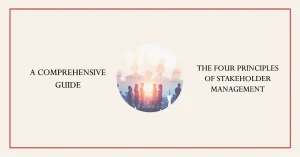Introduction to ETC in Project Management
The Estimate to Complete (ETC) is a crucial metric that represents the expected cost required to finish the remaining work on a project. It serves as a financial indicator, helping project managers assess the resources necessary to successfully complete their projects. By calculating ETC, project managers can gain insights into the remaining budget and make informed decisions regarding resource allocation and project adjustments, ensuring that they stay on track to meet their objectives [1][11].
The significance of ETC extends beyond mere financial tracking; it plays a vital role in monitoring project progress and forecasting future performance. By regularly updating the ETC, project managers can identify variances between planned and actual expenditures, allowing them to adjust their strategies proactively. This ongoing assessment is essential for maintaining control over project costs and timelines, ultimately contributing to the successful delivery of projects within budget [2][10][14].
In addition to its financial implications, the concept of risk management is integral to project success. Risk management involves identifying, analyzing, and responding to potential threats that could impact a project’s objectives. By integrating ETC with effective risk management strategies, project managers can better anticipate challenges and develop contingency plans. This proactive approach not only mitigates risks but also enhances the likelihood of delivering projects on time and within budget [5][6][12].
The Relationship Between ETC and Risk Management
The concept of Estimate to Complete (ETC) plays a crucial role in understanding and managing risks effectively. By linking ETC with proactive risk mitigation strategies, project managers can enhance their ability to foresee potential challenges and implement measures to address them. Here are some key points illustrating this relationship:
- ETC as an Indicator of Potential Risks: ETC provides a forecast of the remaining costs required to complete a project. By analyzing ETC alongside project performance metrics, project managers can identify discrepancies that may signal underlying risks. For instance, if the ETC is significantly higher than the original budget, it may indicate scope creep, resource allocation issues, or unforeseen challenges that need to be addressed promptly. This proactive approach allows managers to take corrective actions before risks escalate into more significant problems [2][10].
- Feedback Loop Between ETC Estimations and Risk Identification: The process of estimating ETC is not a one-time event; it is an ongoing activity that should be revisited regularly throughout the project lifecycle. As project conditions change, so do the risks associated with it. By continuously updating ETC estimates, project managers create a feedback loop that enhances risk identification. For example, if a project is falling behind schedule, the updated ETC can reveal whether additional resources are needed or if the project scope should be adjusted to mitigate the risk of delays [1][9].
- Importance of Accurate ETC Calculations: Accurate ETC calculations are vital for effective risk management. Inaccurate estimates can lead to misinformed decisions, resulting in budget overruns and project delays. By employing best practices in calculating ETC, such as using historical data, involving team members in the estimation process, and regularly reviewing project progress, project managers can ensure that their ETC figures are reliable. This reliability is essential for making informed decisions that mitigate risks and keep the project on track [4][10][13].
Best Practices for Integrating ETC in Risk Mitigation Strategies
The concept of Estimate to Complete (ETC) plays a pivotal role in effective risk management. By leveraging ETC, project managers can enhance their proactive risk mitigation strategies, ensuring that projects remain on track and within budget. Here are some actionable strategies for integrating ETC into risk management practices:
- Encourage Regular Updates of ETC: It is essential for project managers to regularly update the ETC to reflect the current realities of the project. This practice not only provides a more accurate picture of the remaining work and associated costs but also allows for timely adjustments in response to emerging risks. Regular updates help in identifying potential overruns early, enabling the team to implement corrective actions before issues escalate [1][10].
- Utilize ETC for Scenario Analysis: ETC can serve as a valuable tool for conducting scenario analysis during risk assessments. By evaluating different scenarios based on varying assumptions about project progress and resource availability, project managers can better understand the potential impacts of risks. This analysis aids in prioritizing risks and developing tailored mitigation strategies that align with the project’s objectives [4][15].
- Promote Collaborative Approaches: Engaging the project team in the estimation process can significantly improve the accuracy of ETC. Collaborative approaches, such as brainstorming sessions or workshops, allow team members to share insights and experiences that may influence the estimates. This collective input not only enhances the reliability of the ETC but also fosters a sense of ownership among team members, which can lead to more proactive risk management [3][12].
By implementing these best practices, project managers can effectively integrate ETC into their risk management strategies, leading to improved project outcomes and enhanced resilience against uncertainties. The proactive use of ETC not only aids in identifying and mitigating risks but also supports informed decision-making throughout the project lifecycle.
Proactive Risk Mitigation Using ETC
The concept of Estimate to Complete (ETC) plays a pivotal role in not only tracking project progress but also in proactively managing risks. By leveraging ETC effectively, project managers can anticipate potential challenges and implement strategies to mitigate them before they escalate. Here are some key points to consider:
Identifying Common Risks Through ETC Analysis
- Budget Overruns: One of the most common risks in project management is the potential for budget overruns. By regularly updating the ETC, project managers can identify trends in spending and forecast future costs, allowing them to address budgetary concerns before they become critical issues. This proactive approach enables timely adjustments to project scope or resource allocation to stay within budget.
- Schedule Delays: ETC can also highlight potential schedule delays. By analyzing the remaining work and the time required to complete it, project managers can foresee when tasks may fall behind schedule. This foresight allows for the reallocation of resources or the adjustment of timelines to mitigate the impact of delays.
- Resource Availability: Changes in resource availability can pose significant risks to project timelines and deliverables. By monitoring ETC, project managers can anticipate when key resources may become unavailable and take proactive measures, such as cross-training team members or securing backup resources, to ensure project continuity.
The Role of Forecasting in Proactive Risk Management
Forecasting is integral to effective risk management, and ETC serves as a valuable tool in this process. By utilizing historical data and current project metrics, project managers can create more accurate forecasts regarding project completion and resource needs. This predictive capability allows for:
- Informed Decision-Making: With accurate forecasts derived from ETC, project managers can make informed decisions about project adjustments, resource allocation, and risk mitigation strategies.
- Scenario Planning: Project managers can use ETC to model various scenarios, assessing the impact of different risks on project outcomes. This enables them to develop contingency plans that can be activated if certain risks materialize.
Tools and Techniques for Monitoring ETC and Risks
Effective monitoring of Estimate to Complete (ETC) is crucial for project managers and risk management professionals, as it directly influences the ability to mitigate risks proactively. Here are some key tools, techniques, and metrics that can enhance the monitoring of ETC and associated risks:
Popular Project Management Tools for ETC Tracking
- Project Management Software: Many project management platforms integrate ETC tracking features, allowing project managers to monitor progress and forecast future performance. Tools like ProjectManager and Asana offer functionalities that combine ETC tracking with Gantt charts and dashboards, providing a comprehensive view of project status and potential risks [2][5].
- Risk Management Software: Specialized risk management tools can also track ETC while assessing risks. These tools often include features for risk identification, analysis, and response planning, which can be aligned with ETC data to enhance decision-making [2].
- Spreadsheets and Templates: While not as sophisticated as dedicated software, using risk-tracking templates in spreadsheets can help project managers maintain a clear record of ETC alongside identified risks. This method allows for customization and flexibility in tracking various project parameters [5].
Techniques for Visualizing ETC Data
- Dashboards: Utilizing dashboards that display real-time ETC data can significantly improve risk management insights. Dashboards can visualize key metrics, allowing project managers to quickly identify trends and anomalies that may indicate potential risks [2].
- Graphs and Charts: Employing visual tools such as line graphs or bar charts to represent ETC over time can help project managers understand the trajectory of project costs and timelines. This visualization aids in recognizing patterns that may signal emerging risks [2].
- Heat Maps: Heat maps can be particularly effective in illustrating the relationship between ETC and risk levels. By color-coding areas of concern, project managers can quickly assess which aspects of the project require immediate attention [2].
Metrics and KPIs for Comprehensive Risk Assessment
- Cost Performance Index (CPI): This metric compares the budgeted cost of work performed to the actual cost, providing insights into the efficiency of resource utilization. A declining CPI may indicate potential risks related to budget overruns, which can be correlated with ETC data [10].
- Schedule Performance Index (SPI): Similar to CPI, SPI measures the efficiency of time management in a project. Monitoring SPI alongside ETC can help project managers identify scheduling risks early on, allowing for timely interventions [10].
- Variance Analysis: Regularly conducting variance analysis between planned and actual ETC can highlight discrepancies that may signal underlying risks. This analysis can be complemented with qualitative assessments of risk factors to provide a holistic view of project health [10].
By leveraging these tools and techniques, project managers can enhance their ability to monitor ETC and associated risks effectively. This proactive approach not only aids in risk mitigation but also contributes to the overall success of project management efforts.
Challenges in Using ETC for Risk Management
Estimating the Estimate to Complete (ETC) accurately is crucial for effective risk management in project management. However, several challenges can hinder this process, impacting the reliability of ETC and, consequently, the overall project success. Below are some common challenges, their implications, and potential solutions to enhance the accuracy of ETC in risk management.
Common Challenges in Estimating ETC Accurately
- Time Constraints: Project managers often face tight deadlines when preparing estimates. The limited time available can lead to rushed calculations, resulting in inaccuracies in the ETC. This challenge is exacerbated when managing multiple projects simultaneously, where the pressure to deliver can compromise the quality of estimates [5][10].
- Scope Creep: Changes in project scope can significantly affect the accuracy of ETC. When new requirements are added without proper assessment, it can lead to underestimating the resources and time needed to complete the project. This often results in budget overruns and missed deadlines, making it a critical challenge for project managers [10][15].
- Lack of Clear Goals: Unclear project objectives can lead to confusion in estimating ETC. Without well-defined goals and success criteria, project managers may struggle to assess the necessary resources accurately, leading to unreliable estimates [10][11].
- Inadequate Risk Analysis: Failing to conduct thorough risk assessments can result in overlooking potential challenges that may arise during the project lifecycle. This oversight can lead to an underestimation of the ETC, as unforeseen risks can escalate costs and extend timelines [11][13].
Impact of External and Internal Factors on ETC Reliability
- External Factors: Market fluctuations, regulatory changes, and economic conditions can all impact project costs and timelines. These external variables can introduce uncertainty into the ETC, making it difficult for project managers to provide accurate estimates [2][3].
- Internal Factors: Team dynamics, resource availability, and organizational changes can also affect the reliability of ETC. For instance, if team members lack the necessary skills or if there are communication breakdowns, it can lead to miscalculations in the ETC [10][12].
Solutions to Overcome These Challenges
- Implementing Robust Estimation Techniques: Utilizing advanced estimation methods, such as parametric estimates or probability-impact matrices, can enhance the accuracy of ETC calculations. These techniques allow project managers to consider various scenarios and their potential impacts on project costs and timelines [8][9].
- Regularly Updating Estimates: Continuous monitoring and updating of ETC throughout the project lifecycle can help account for changes in scope, resources, and external factors. This proactive approach ensures that estimates remain relevant and reliable [4][13].
- Enhancing Communication and Collaboration: Fostering open communication among team members and stakeholders can help clarify project goals and expectations. Regular check-ins and collaborative planning sessions can mitigate misunderstandings and ensure that everyone is aligned on project objectives [4][10].
- Conducting Comprehensive Risk Assessments: Establishing a thorough risk management plan that includes identifying, evaluating, and responding to potential risks can significantly improve the accuracy of ETC. By anticipating challenges and preparing for them, project managers can create more reliable estimates [6][12].
By acknowledging these challenges and implementing effective strategies, project managers can enhance the reliability of ETC in their risk management practices, ultimately leading to more successful project outcomes.
Conclusion: The Future of ETC in Project Risk Management
The concept of Estimate to Complete (ETC) plays a pivotal role in enhancing risk management strategies. As project managers strive to navigate complexities and uncertainties, integrating ETC with proactive risk mitigation becomes essential for successful project outcomes. Here are the key takeaways regarding the future of ETC in project risk management:
- Integration of ETC with Proactive Risk Management: The synergy between ETC and proactive risk management is crucial. By accurately estimating the remaining costs and resources required to complete a project, managers can better anticipate potential risks and develop strategies to mitigate them. This integration allows for a more informed decision-making process, enabling project managers to allocate resources effectively and address risks before they escalate into significant issues. The systematic approach to identifying, analyzing, and responding to risks enhances the overall project execution and success rates [1][10].
- Continuous Learning and Adaptation: The dynamic nature of project management necessitates a commitment to continuous learning and adaptation. As new tools, techniques, and methodologies emerge, project managers must remain agile and open to incorporating these innovations into their practices. This includes staying updated on best practices in risk management and leveraging data analytics to refine ETC estimates. By fostering a culture of learning, organizations can enhance their risk management capabilities and improve project outcomes [3][12].
- Future Trends Impacting ETC and Risk Management: Looking ahead, several trends are likely to influence the role of ETC in project risk management. The increasing reliance on technology, such as artificial intelligence and machine learning, will provide project managers with advanced tools for risk analysis and forecasting. Additionally, the growing emphasis on agile project management methodologies will encourage more iterative and flexible approaches to risk management, allowing for quicker responses to emerging risks. As these trends evolve, project managers will need to adapt their ETC practices to align with new paradigms in project execution and risk mitigation [4][9][15].
In summary, the future of ETC in project risk management is promising, with the potential to significantly enhance project success through proactive strategies. By integrating ETC with risk management, committing to continuous learning, and embracing future trends, project managers can navigate the complexities of their projects more effectively and ensure successful outcomes.
Find out more about Shaun Stoltz https://www.shaunstoltz.com/about/.
This post was written by an AI and reviewed/edited by a human.



